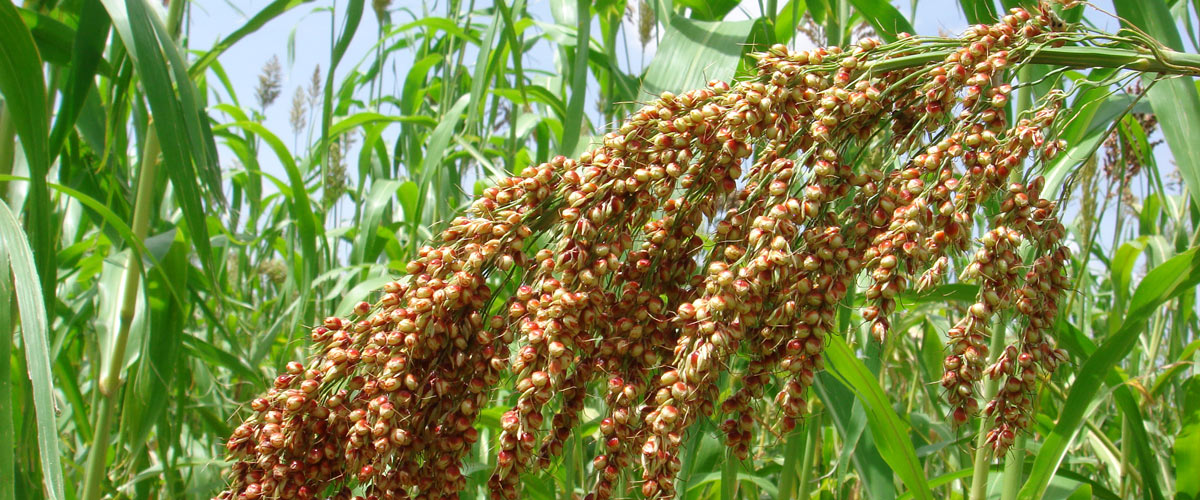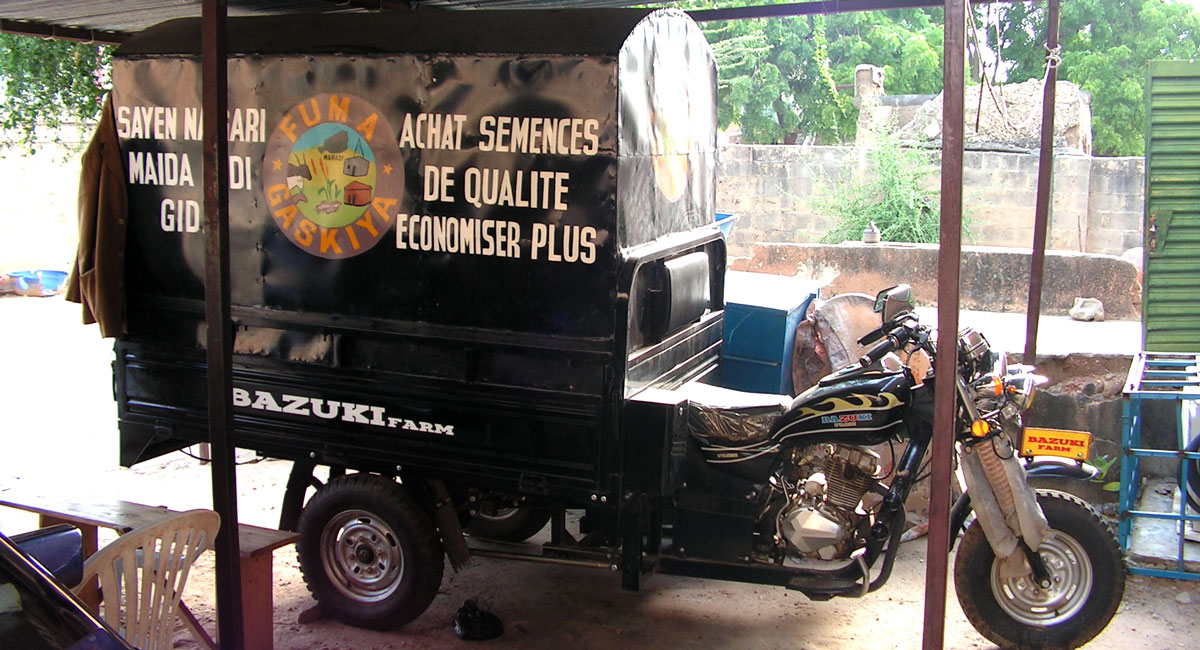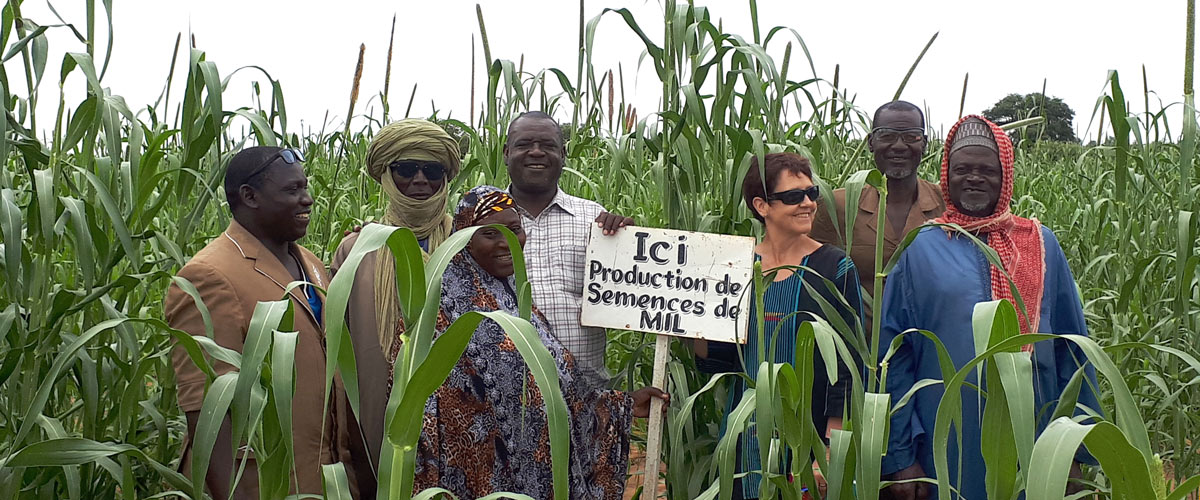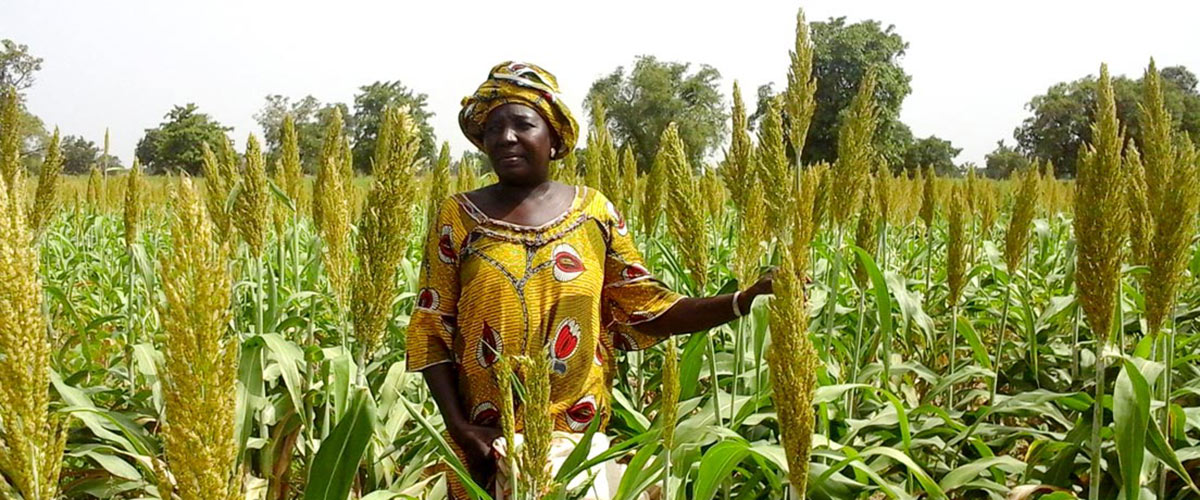
Long-Term Engagement in Local Seed Systems
Reasons for the long-term engagement in local seed systems development in West Africa by the McKnight Foundation’s Collaborative Crop Research Program (CCRP)
Bettina Haussmann and Batamaka Somé, April 1, 2020
The most critical input into agricultural production is seed. Without appropriate seed, production can fail even when all other environmental conditions are optimal. Good seed does not just mean good yield; it means sufficient yield stability, good processing ability, and suitable quantity, appropriate color, consistency, storability, and taste of the final food product.
Many traditions and societal rules apply to seed, as do much local and cultural knowledge. Views in West Africa hold that a good farmer produces his or her own seed. Traditionally, seed is not for selling: If your neighbor needs seed and you still have some, you are obliged to share yours. Local varieties are considered ancestral heritage, and traditional local varieties cannot easily be replaced. Varietal choice is critical: A wrong choice can mean hunger and famine or inappropriate food supply for a whole year since Sahelian West Africa has only one rainy season and uneven annual rainfalls between 200-700 millimeters. Farmers are thus risk-averse and tradition-grounded in their yearly decision-making regarding seed.

Mobile seed shop of the Farmer Federation FUMA Gaskiya in Niger. Source: Bettina Haussmann
Abiding by its “do no harm” approach, the CCRP-funded seed systems project strived to first understand and then build on local traditions and knowledge related to seed and existing seed security networks in Mali, Burkina Faso, and Niger. It was important to work with target farmers, including women, in a highly participatory manner to build on existing social values related to seed and to combine them with new, farmer-led seed systems innovations. In the postcolonial contexts of the West African region, with vivid memories of colonial traumas where coercive initiatives were forced on the populations, it takes time to engender buy-in grounded in the understanding and trust required to advance together and develop sustainable seed systems options. The expectation is that those options will work better for risk-averse and tradition-bound smallholder farmers while enabling inclusive access to varietal innovations and quality seed.
Additional diversity and equity aspects in seed systems exist through the varietal preferences and needs depending on, for example:
- whether the variety will be grown on women’s or men’s fields (women’s fields often suffer from poorer soil fertility and receive fewer agricultural inputs, therefore requiring a more robust variety), and
- whether the producers’ priority is to feed their livestock, their families, or both, or they intend to sell the produce to the market.
A long-term endeavor
When the CCRP started its work in West Africa some 15 years ago, adoption rates of so-called improved varieties were quite low. In fact, the green revolution approach barely showed promise in the West African region, which warranted an alternative approach. Seed systems activities were thus combined with participatory breeding work to develop a portfolio of varieties that fits smallholder farmers’ diverse preferences and needs. Since plant breeding per se is a long-term endeavor—it takes six to eight years to develop a new variety—so, too, is seed systems work. The adoption work is a different side of the endeavor that needs to and is being worked on in an integrated manner. Equity-related aspects also come in; for example, the decision-making power of a woman in a household may influence whether she can grow her preferred varieties on her fields. The same applies to young farmers. Understanding and overcoming such constraints require time.

Pearl millet seed production by the Mooriben farmer union in Falwel-Niger. Source: Bettina Haussmann
Continuous variety testing, seed production, and commercialization are knowledge intensive. Depending on the crop and variety type, different measures must be taken during seed production to maintain the varietal identity and obtain appropriate seed quality. It takes time to build the capacity, infrastructure, and rigor required in variety testing and quality seed production to assure long-term quality. The project started with cereals (sorghum and pearl millet), which are relatively easy to store. Legume crops (cowpea, groundnut, Bambara nut) were added in the third phase and required additional knowledge creation, especially regarding storage conditions to maintain quality. Seed commercialization was a completely new task for the seed cooperatives. It took time to learn and develop inclusive business models that build on social values while assuring the cooperatives’ sustainability.
A broad strategy for seed sector development
The seed case study, Innovations in Seed Systems, commissioned by the CCRP in 2014 documented that the CCRP’s seed systems initiative successfully contributed to improving seed system security in West Africa by targeting seed availability, access, and quality. Core to its success was the simultaneous development of varieties that are adapted to the local context and produce considerably higher yields under farmers’ production conditions while maintaining other preferred traits. Through the decentralized, participatory variety evaluation trials, farmers have gained contextualized knowledge of these varieties and can make informed decisions on the options available to them.

Sorghum hybrid parent seed producer in Mali. Source: Baloua Nebie
Inclusion of women in the variety trials led to further contextualized knowledge about new varieties, which in turn contributed to the positive impact on productivity, income, and nutrition at project sites. The availability of seed of these varieties has much improved. The number of seed producers has increased year to year, as has the area used for seed production. By taking a mini packet approach for seed marketing to individual farmers, access to seed has improved. In addition, several other pathways for seed distribution exist, including government agencies, NGOs, or private seed enterprises acting as partners of the farmer organizations.
However, the case study also underlined that the project was at an important turning point in 2014. It started moving from a mere experimental research stage, in which methodologies were tested and capacities built, toward broader implementation. The current phase supports this transition by addressing remaining challenges in the seed chain itself and developing a broader strategy for seed sector development.
As knowledge and capacity building are necessary to make farmer‐managed seed production more sustainable, so are material resource base and risk‐reducing measures. To address the seed sector as a whole, an entry point for a science‐policy dialogue needs to emerge. The actual phase of the the CCRP-funded Networking4Seed project works to establish multi‐stakeholder platforms that can serve this purpose. It aims as well at facilitating the development of a shared vision and coordinated action toward the integrated development of more sustainable, equitable, and resilient seed systems in the three countries.
Resource Download:
Long-Term Engagement in Local Seed Systems (pdf)
Date:
4/20/2021